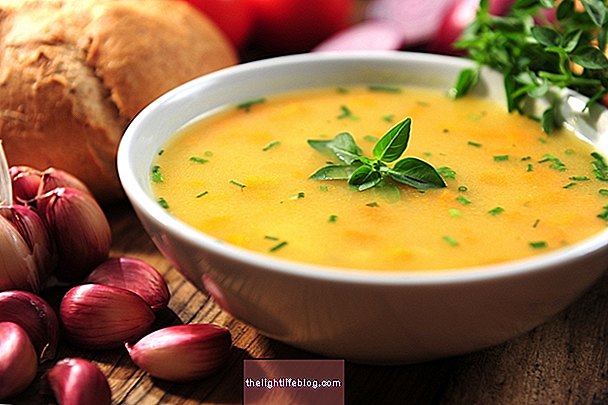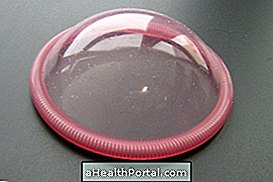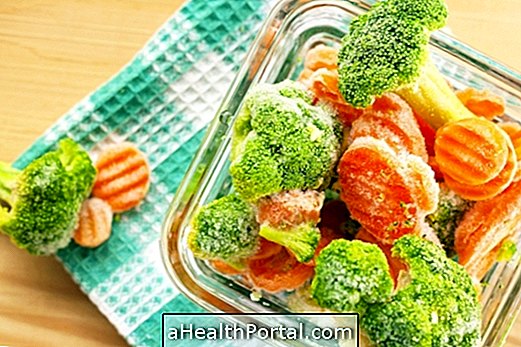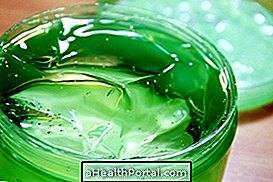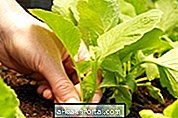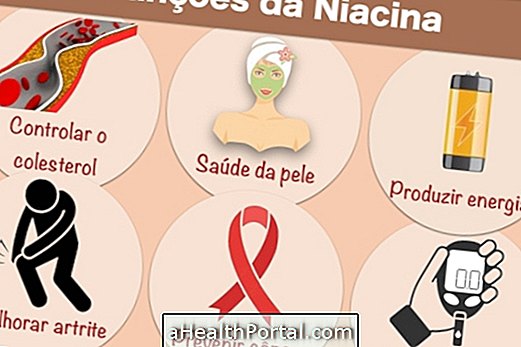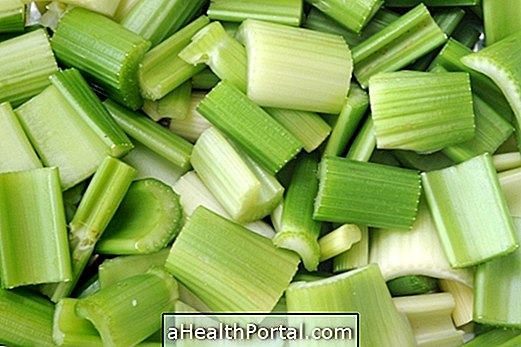The taioba, or soft taioba, is a large-leafed vegetable, of the species Xanthosoma sagittifolium, and is rich in nutrients such as fiber, vitamins A, B and C, and minerals such as calcium, phosphorus, potassium and magnesium that help fight premature skin aging, strengthen the immune system and prevent the development of cardiovascular diseases. In addition, the iron in taioba helps in the treatment and prevention of anemia.
Although it has many health benefits, it is important to consume the sweet taioba only if you are sure that it is of the species Xanthosoma sagittifolium, because there is also the wild taioba of the species Colocasia antiquorum which is poisonous and contains large amounts of calcium oxalate which can cause asphyxiation, burning in the throat and mouth. To identify the soft taioba its leaves must be observed, which have a uniform green color and have a line around its entire border, the stem is green and leaves the union of the leaves.
It is recommended that the sweet taioba is always eaten cooked or sautéed, because the heat of cooking eliminates the small amounts of calcium oxalate of this species. Thus, cooked or braised taioba can be used in salads, or added in juices or soups, for example.

The main benefits of taioba are:
1. Improves the functioning of the digestive system
Thaioba is rich in fibers that aid digestion and help the intestine to function better, increasing the formation of fecal bolus and accelerating intestinal transit, being very useful to combat constipation.
2. Prevents anemia
Thaioba helps prevent anemia because it is rich in iron, which is an essential mineral for the formation of hemoglobin which is a protein responsible for the transport of oxygen in the blood and which, when it is lacking in the body, causes anemia.
In addition, taioba also has folic acid in its composition, which is necessary for the formation of healthy red blood cells, which also helps to prevent anemia.
3. Improves mood
Thaioba is rich in vitamin B6 which is important for increasing the production of brain neurotransmitters, such as GABA, serotonin and dopamine, which are responsible for maintaining and improving mood, reducing anxiety and depression, in addition to contributing to increase the feeling of relaxation of the body and fight fatigue.
In addition, some studies show that vitamin B6 in taioba, by increasing the production of neurotransmitters in the brain, can be useful to assist in the treatment of autism.

4. Protects against cardiovascular disease
The fibers present in taioba act by increasing digestion and decreasing the absorption of fats from food. Thus, it helps in reducing bad cholesterol, which is the substance responsible for the development of cardiovascular diseases such as myocardial infarction or atherosclerosis, for example.
In addition, taioba is rich in vitamin C, a potent antioxidant that helps reduce cell damage by keeping blood vessels healthy. The potassium in taioba helps to reduce high blood pressure, which helps to reduce the risk of cardiovascular disease.
5. Improves eye health
Thaioba is rich in beta-carotene, which is a precursor to vitamin A, important for maintaining vision, especially night vision and therefore contributes to improving eye health. In addition to beta-carotene, taioba also has vitamin A in its composition, which increases eye protection and prevents vision problems such as dry eyes and night blindness.
6. Keeps bones healthy
Thaioba is rich in calcium, phosphorus and magnesium, which are fundamental minerals to strengthen, increase bone strength and density, keeping bones healthy and helping to prevent the development of osteoporosis, osteopenia or rickets, for example, in addition to reducing risk of fractures.

7. Strengthens the immune system
Thaioba is rich in folic acid and vitamins A, B and C that stimulate the production of white blood cells that are essential defense cells to prevent and fight infections and, therefore, help to strengthen the immune system.
8. Slows aging
Thaioba is rich in beta-carotene and vitamins A and C which are potent antioxidants, helping to fight free radicals that cause skin aging.
In addition, vitamin C present in taioba helps to stimulate collagen production by the skin, reducing sagging and the appearance of wrinkles and expression lines, and vitamin A protects the skin from damage caused by the sun's ultraviolet rays.
9. Assists in combating thyroid problems
Taioba has copper in its composition, which is a mineral that helps to balance the levels of thyroid hormones, which helps to fight or prevent thyroid problems such as hyper or hypothyroidism.
Nutritional information table
The following table shows the nutritional composition in 100 g of raw taioba.
Components
Quantity per 100 g
Energy
98 calories
Proteins
1.46 g
Fibers
1.5 g
Fats
0.40 g
Carbohydrates
23.63 g
Beta carotene
5 mcg
Folic acid
17 mcg
Vitamin A
1176 mcg
Vitamin B1
0.097 mg
Vitamin B2
0.04 mg
Vitamin B3
0.677 mg
Vitamin B5
0.209 mg
Vitamin B6
0.237 mg
Vitamin C
5.2 mg
Calcium
9 mg
Iron
0.98 mg
Magnesium
24 mg
Phosphor
51 mg
Potassium
598 mg
Sodium
21 mg
Zinc
0.50 mg
Copper
0.257 mg
Manganese
0.186 mg
Selenium
0.7 mcg
It is important to note that to obtain all the benefits mentioned above, the taioba must be part of a balanced and healthy diet.
How to consume

Taioba can be eaten cooked or sautéed added to salads, juices, pizza fillings, crepes and dumplings, and can be added in broths, soups or vitamins to bring greater nutritional value to the meal.
The taste of taioba is similar to that of spinach, but it is lighter and easier to fit into various recipes, even for children and adults who do not usually like vegetables.
Healthy recipes with taioba
Some easy-to-prepare and nutritious quick taioba recipes are:
Sauteed taioba

Ingredients
- 2 taioba leaves and their washed stems;
- 1 clove of minced garlic;
- 1 spoon of extra virgin olive oil;
- Salt to taste.
Preparation mode
Peel the stems of the taioba and prick the leaves and stems. In a saucepan, add the olive oil, garlic and salt. When the garlic is golden brown, put in the taioba and sauté. Serve next.
Taioba juice

Ingredients
- 1 small cucumber;
- 3 tablespoons of washed and chopped and cooked taioba;
- Juice of 1 medium orange
- 1 tablespoon of honey.
Preparation mode
Cook the taioba with a little water. Then, beat all the ingredients in the blender and drink.
Was this information helpful?
Yes No
Your opinion is important! Write here how we can improve our text:
Any questions? Click here to be answered.
Email in which you want to receive a reply:
Check the confirmation email we sent you.
Your name:
Reason for visit:
--- Choose your reason --- DiseaseLive betterHelp another personGain knowledge
Are you a health professional?
NoMedicalPharmaceuticalsNurseNutritionistBiomedicalPhysiotherapistBeauticianOther
Bibliography
- JACKIX, Elisa de Almeida; et al. Taioba (Xanthosoma sagittifolium) leaves: nutrient composition and physiological effects on healthy rats. J Food Sci. 78. 12; H1929-1934, 2013
- BOAKYE, Abena A .; et al. Utilizing cocoyam (Xanthosoma sagittifolium) for food and nutrition security: A review. Food Sci Nutr. 6. 4; 703-713, 2018
- SATO, Kohji. Why is vitamin B6 effective in alleviating the symptoms of autism?. Medical Hypotheses. 115. 103-106, 2018
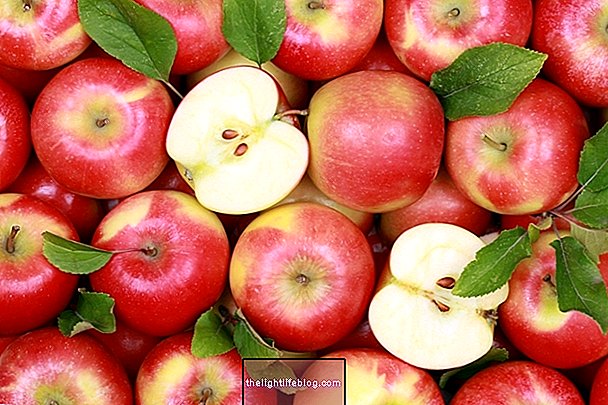
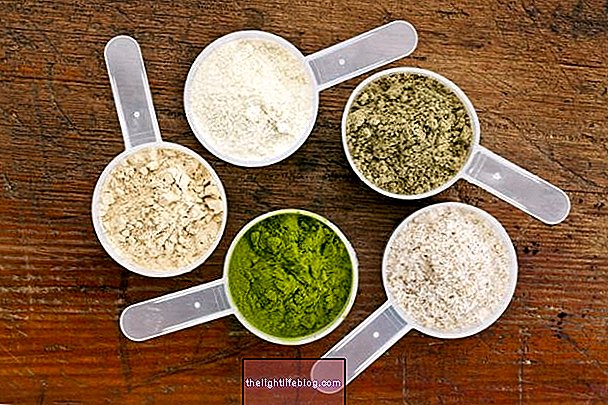

.jpg)

